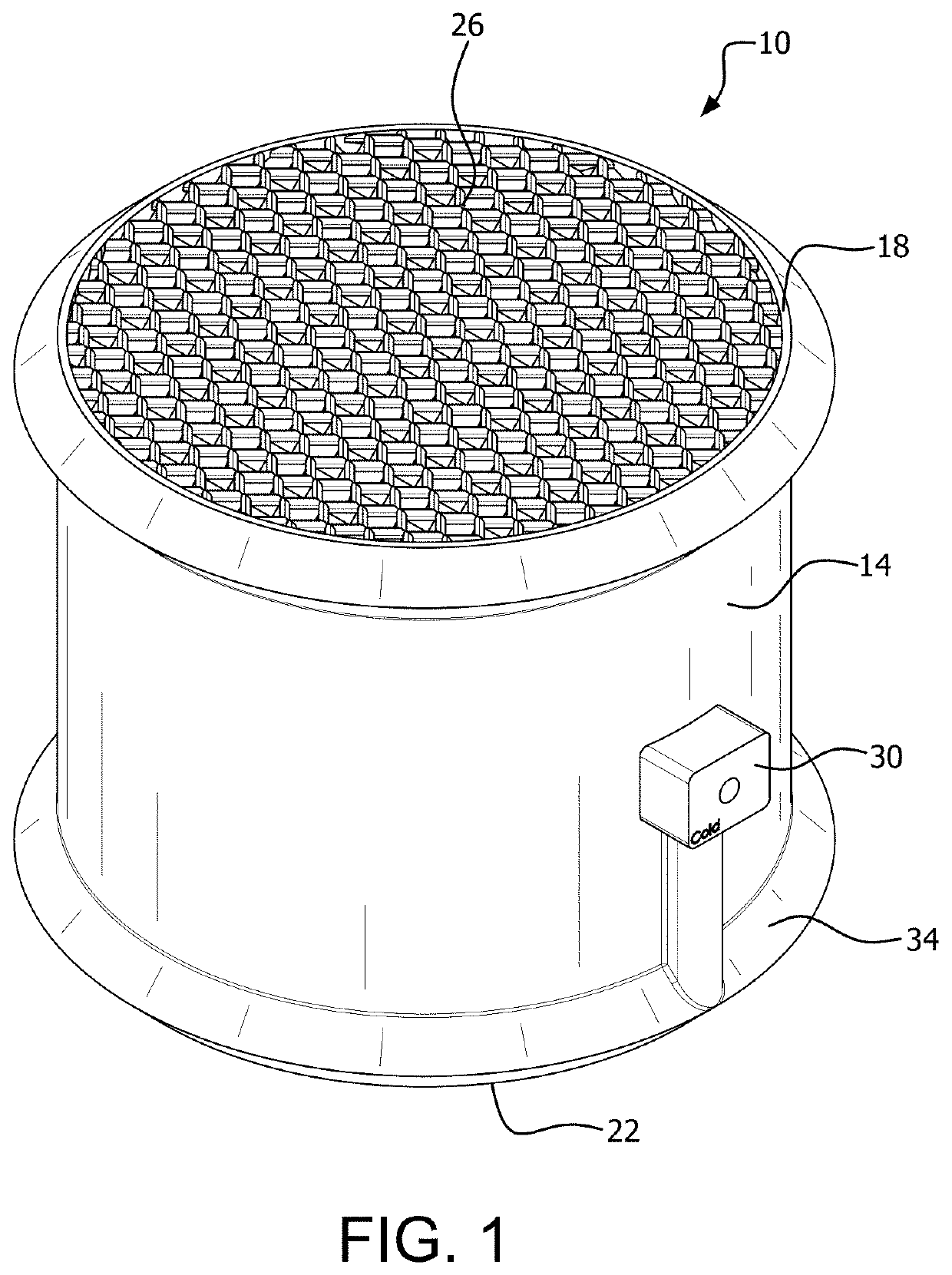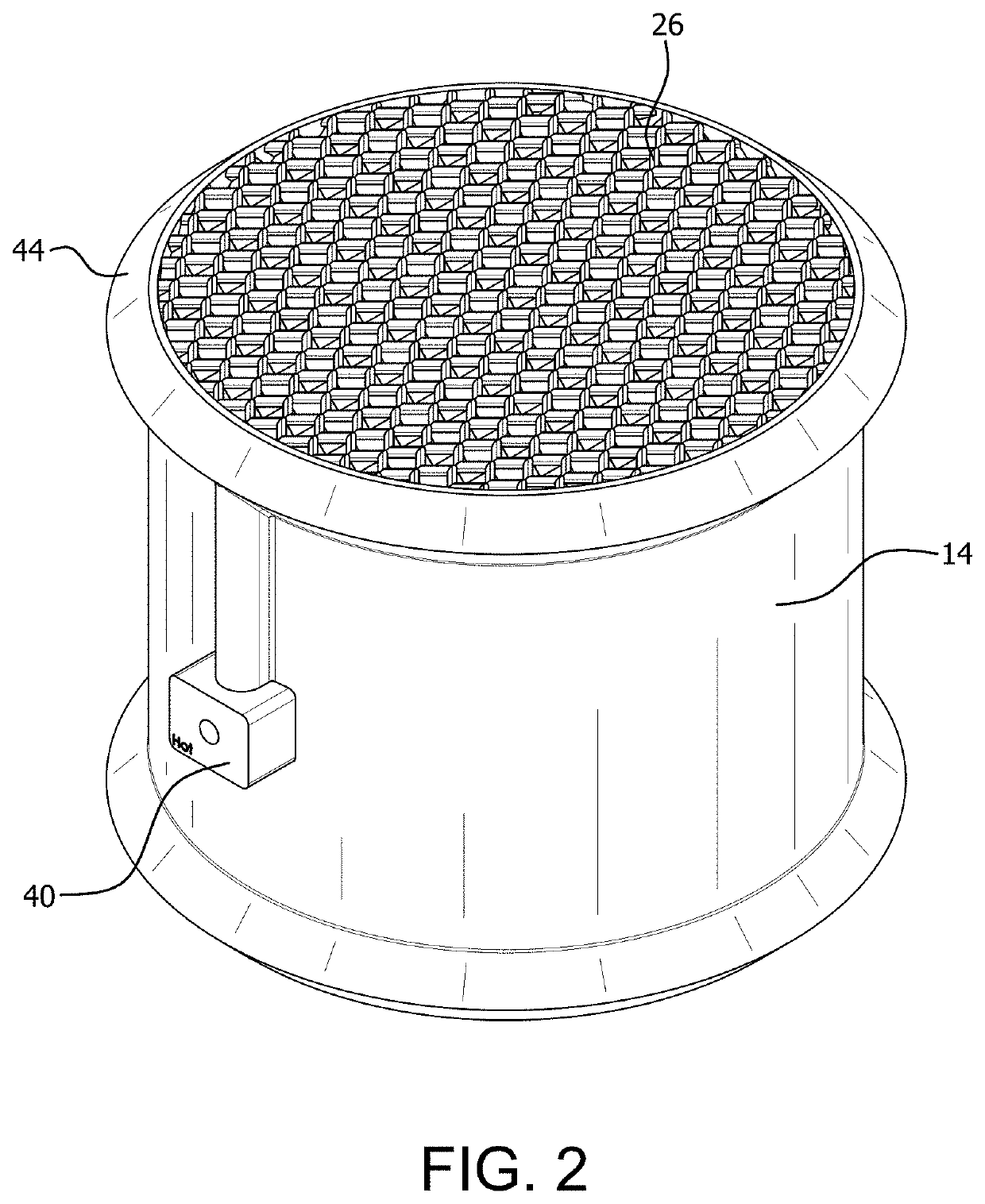Multifunctional intensified reactor device with integrated heat and mass transfer
a multi-functional, intensified reactor technology, applied in the direction of separation process, chemical/physical/physico-chemical process, separation of dispersed particles, etc., can solve the problem that the decarbonization progress to achieve the ipcc's target of an average temperature increase of under 1.5° c. has not yet been successful, the methods investigated are prohibitively expensive or speculative, and have not yet been commercialized
- Summary
- Abstract
- Description
- Claims
- Application Information
AI Technical Summary
Benefits of technology
Problems solved by technology
Method used
Image
Examples
example
[0090]A packing device according to the invention was manufactured at Oak Ridge National Laboratory's Manufacturing Demonstration Facility. Corrugated sheets were modeled in Solidworks and bundled together. The angle of corrugation can be altered, but for this experiment it was set to 45°. A cylindrical cut was then made on the stack of corrugated sheets. Previous studies have evaluated the hydrodynamic characteristics of 3D printed plastic packing elements of Mellapack geometry in comparison to those of metal and plastic commercial packing elements. It was found that 3D printed plastic packing elements had a pressure drop that compared favorably to both metal and plastic commercial packing elements; however, the wettability compared poorly to the metal commercial packing element which suggests selecting a more hydrophilic material would improve the performance of the device. For that reason, aluminum was chosen as the printing material in this study, as well as because of its high ...
PUM
| Property | Measurement | Unit |
|---|---|---|
| temperature | aaaaa | aaaaa |
| mass | aaaaa | aaaaa |
| acute angle | aaaaa | aaaaa |
Abstract
Description
Claims
Application Information
 Login to View More
Login to View More - R&D
- Intellectual Property
- Life Sciences
- Materials
- Tech Scout
- Unparalleled Data Quality
- Higher Quality Content
- 60% Fewer Hallucinations
Browse by: Latest US Patents, China's latest patents, Technical Efficacy Thesaurus, Application Domain, Technology Topic, Popular Technical Reports.
© 2025 PatSnap. All rights reserved.Legal|Privacy policy|Modern Slavery Act Transparency Statement|Sitemap|About US| Contact US: help@patsnap.com



